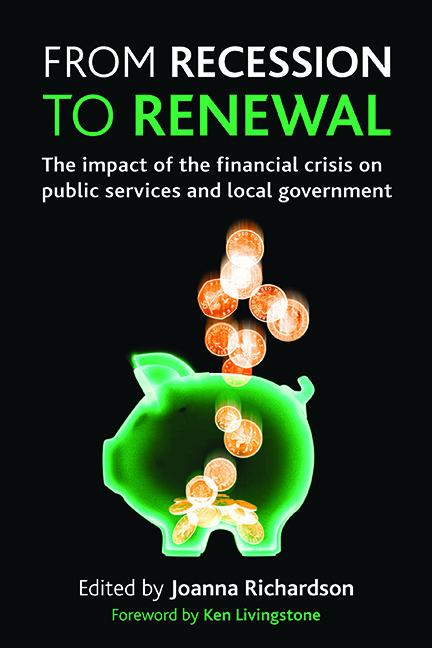 From Recession to Renewal
From Recession to Renewal eight - Choice, empowerment, personalisation: taking forward public services in a recession
Published online by Cambridge University Press: 01 September 2022
Summary
Introduction
There is a political consensus. The three main parties in England support the principles of choice, empowerment and personalisation for users of public services. They also recognise that there is a growing need for these services. At the same time, there is an acceptance that there must be severe public expenditure controls over the next decade to deal with the impact of the financial crisis and to plan for the upturn. The Conservative–Liberal Democrat coalition agreement in May 2010 prioritised deficit reduction and a commitment to £6 billion cuts in non-front-line services in 2010–11. Nevertheless, they contend that front-line services can be protected, if not enhanced (Conservative Liberal Democrat Coalition, 2010).
Choice, empowerment and personalisation are embedded in the public sector. Simmons et al (2009) illustrate their central role in health, social housing, education and social care. In relation to the health sector, it includes choice of GP and appointment times. In social housing, the government set a target in 2002 that all local authority allocations systems should be using choice-based lettings by the end of 2010 (although the ‘terror’ of targets in systems has been discussed in the Chapter Seven). In education, the focus has centred on choice and type of school. From a social care viewpoint, personalisation through individual budgets has become a mainstream policy. ‘Choice’, ‘empowerment’ and ‘personalisation’ are, however, terms that are often used in an unsatisfactory, interchangeable way. For the purpose of clarity, we use ‘choice’ to refer to the opportunities for users to choose the content and level of service, the provider and form of access. ‘Empowerment’ relates to the provision of information so that the user has knowledge of what is on offer, by whom and how. The state has a major role in performing this enabling function. ‘Personalisation’ refers to the ability of the user to actively make informed decisions, that is, operationalising the concept of choice.
Nevertheless, the implementation of choice, empowerment and personalisation has not been straightforward over the last decade, during a period of relative economic prosperity. There will, thus, be further challenges during the recession.
- Type
- Chapter
- Information
- From Recession to RenewalThe Impact of the Financial Crisis on Public Services and Local Government, pp. 157 - 178Publisher: Bristol University PressPrint publication year: 2010
- 1
- Cited by


